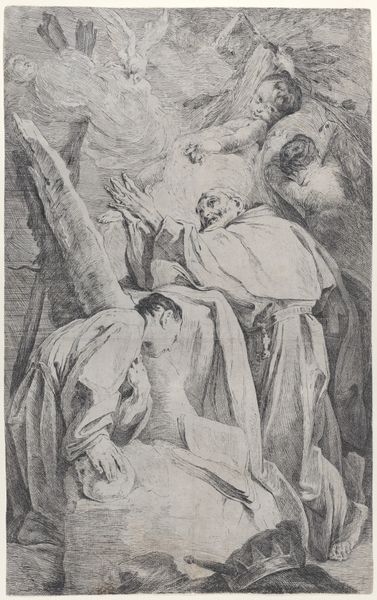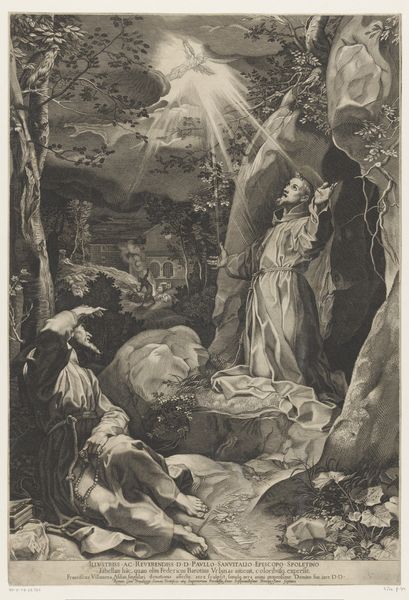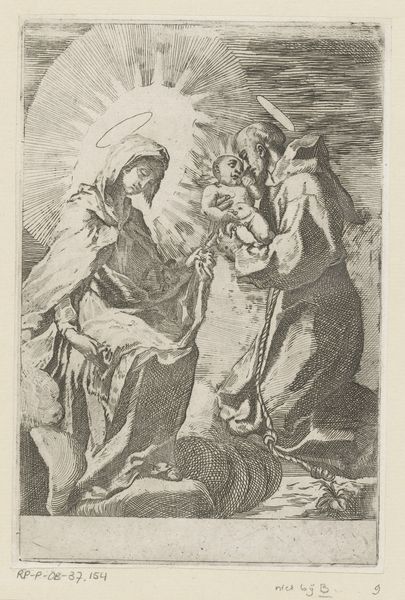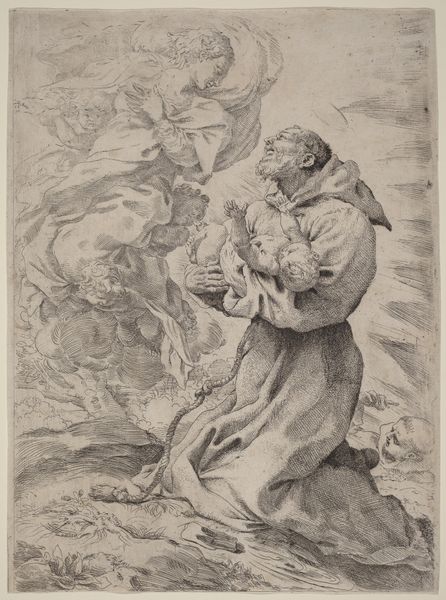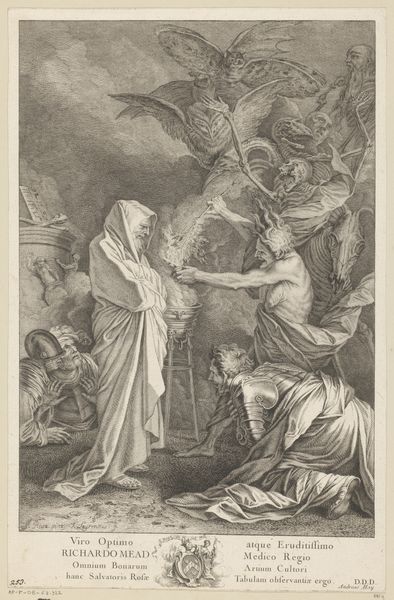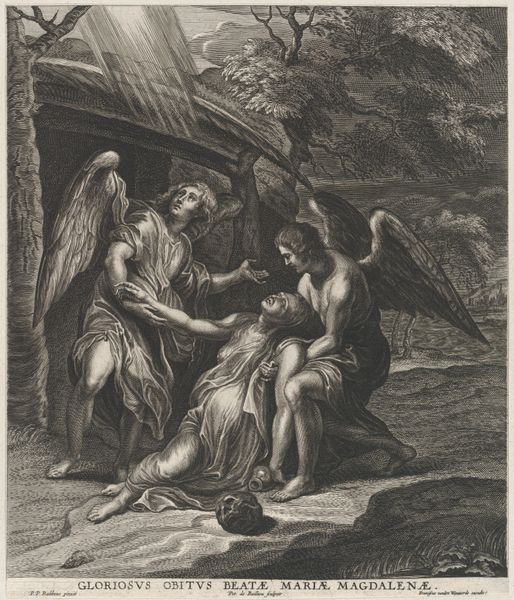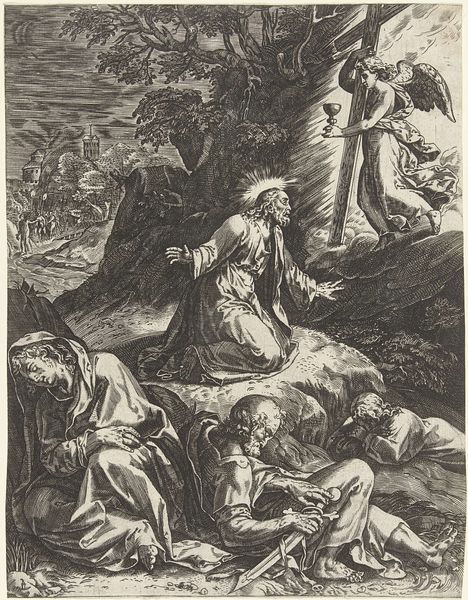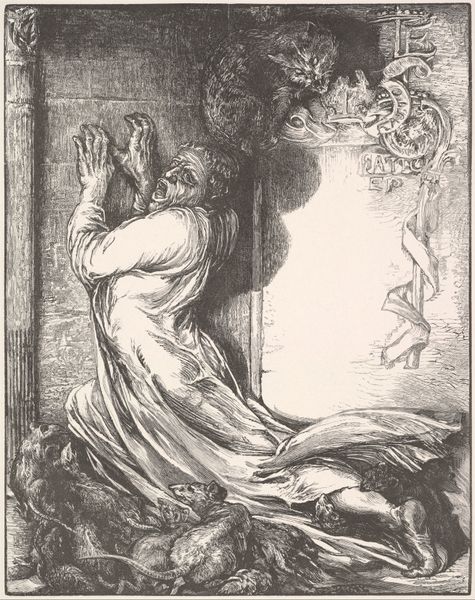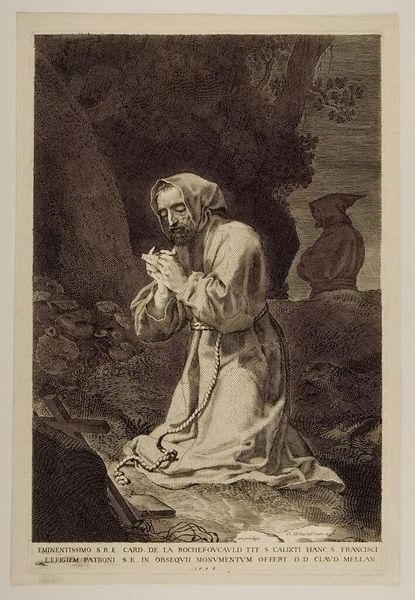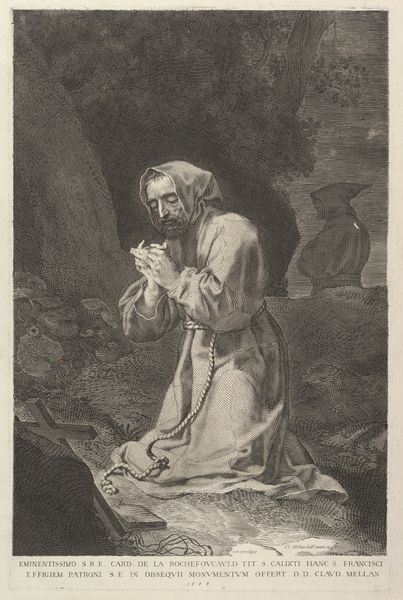
drawing, print, etching, ink
#
drawing
# print
#
etching
#
figuration
#
ink
#
history-painting
Dimensions: 390 mm (height) x 283 mm (width) (bladmaal), 179 mm (height) x 129 mm (width) (plademaal)
Editor: Here we have Carl Bloch's 1880 etching, "Christ in Gethsemane," currently housed at the SMK. The stark black and white, along with the detail achieved through the etching technique, give it an almost unsettling intensity. What do you make of this piece? Curator: Bloch was deeply embedded in the socio-political and religious art world of 19th-century Denmark. "Christ in Gethsemane", much like his other works, served a didactic function, reinforcing established religious narratives for a public audience. Considering its purpose as a print, intended for wider distribution, do you think the artist made any specific visual choices to communicate with a broad audience? Editor: Possibly the intense emotion? The figures are rendered so expressively; their body language seems universally understandable. But what about the artistic establishment's role in shaping a work like this? Curator: The Royal Danish Academy of Fine Arts, where Bloch trained, favored history painting with clear moral messages. This etching is interesting, because it reflects that academic influence, whilst simultaneously embracing printmaking, a more democratic and accessible medium. Do you think the choice of etching medium had any impact on how it was received compared to, say, a grand history painting exhibited at the Academy? Editor: It probably allowed for a wider audience reach and engagement, creating opportunities to disseminate religious ideals among people who could not afford paintings. It would certainly be a very political move to make art available to wider audiences, despite it supporting the socio-political status quo! Curator: Exactly! Considering these dynamics helps us grasp how the production and consumption of religious imagery was intertwined with broader cultural and political landscapes. Thank you, that makes me think about the piece differently too! Editor: Fascinating; I’ll be sure to look at how social context shaped an artwork moving forward!
Comments
No comments
Be the first to comment and join the conversation on the ultimate creative platform.
